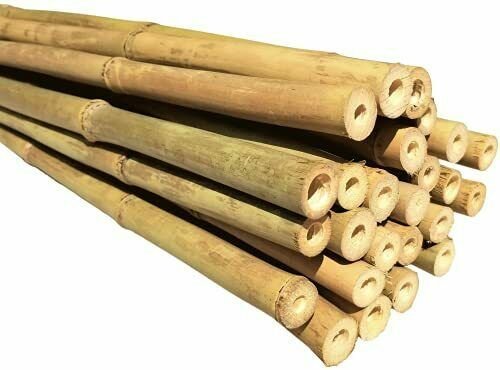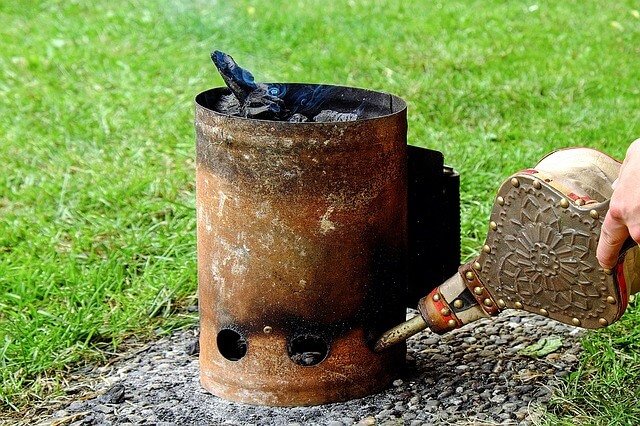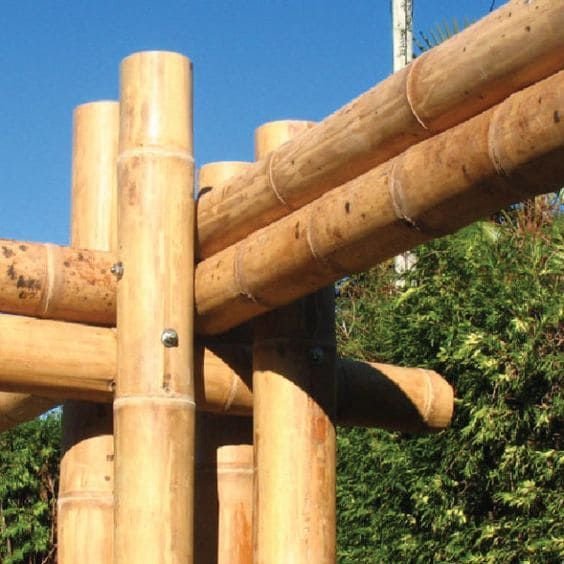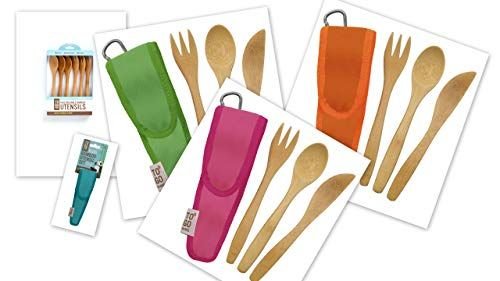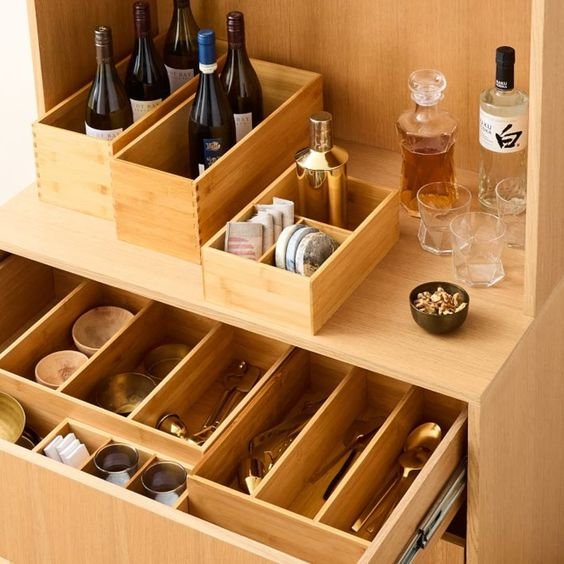How Long Does Bamboo Cutlery Last?
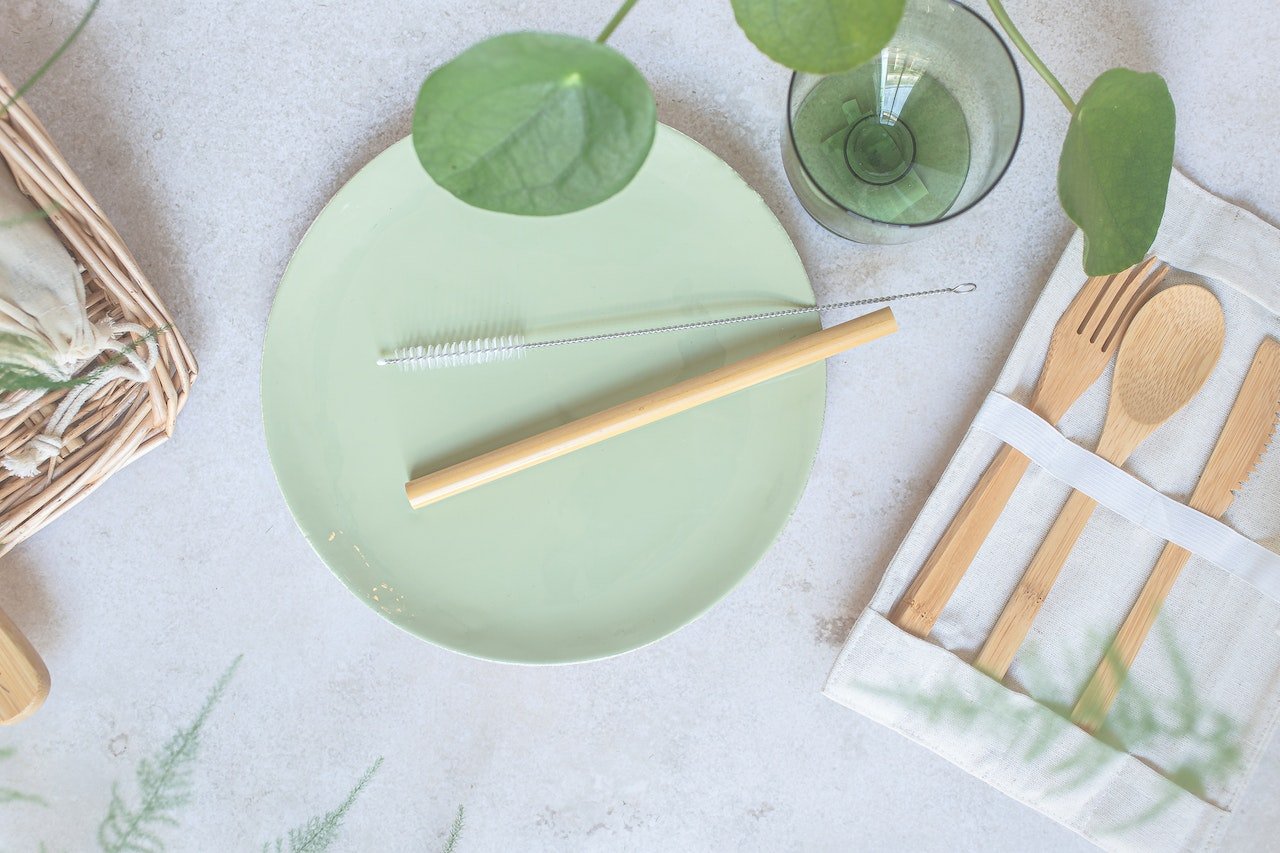
You may not anticipate your favorite bamboo spoon to outlast your stainless steel spatula and plastic chopping board, but it just may. Many bamboo cutlery can endure for 10 years or more, based on the quality of production. Continue reading to see why this fast-growing grass is among the most durable materials for use in the kitchen.
For years, a lot of us have been on such a journey to live a less impactful life. Recycling, eating less high-impact foods, & walking rather than driving have long been recommended as some of the most effective strategies to lower our ecological footprint.
Choosing items that are built to last is an important strategy to reduce the environmental impact of your purchases. The life cycle of the items you use is critical knowledge to have when deciding what materials to employ in your kitchen. After all, cooking utensils are generally among your most often used products. And if you’re looking for eco-friendly cooking equipment, you’ve probably come across bamboo.
What Exactly is Bamboo Cutlery?
Bamboo cutlery is dinnerware manufactured from bamboo, and it has the potential to solve the growing waste problem created by single-use plastic forks and spoons. Unlike non-biodegradable utensils, which add to solid waste pollution, they are created from renewable & natural materials that decompose with minimal environmental impact.
Bamboo cutlery is light and easy to transport. As a result, they can be a wonderful substitute for plastic, oak, and other uncompostable materials.
Why Does Bamboo so Popular?

Bamboo has risen to prominence in recent years as just a biodegradable, organic, and natural substitute for everyday plastic home products. Bamboo has been utilized to replace a wide range of items, and shrewd inventors are constantly reshaping and repurposing bamboo to be used in novel and exciting ways.
Although bamboo may have flown under the radar of Western countries, it has been a famous material in Asia for ages, with origins stretching back almost 7,000 years in China. Bamboo has long been regarded as an essential material for the building industry in Asia. Furthermore, it was formerly extensively used to make books, and if you visit street markets in Vietnam and Thailand, you may even see locals enjoying a meal called “baby bamboo,” which is cooked up using stalks of adolescent bamboo plants.
Furthermore, mature bamboo is utilized as a pipe, mainly in Northern Vietnam, and Asians were already using bamboo flutes as straws long before we Westerners thought to substitute single-use plastic items with bamboo.
It’s no surprise, therefore, that after centuries of usage in Asia, bamboo has now earned the recognition and adoration it deserves in the United States and Europe. Bamboo just needed its time, and as people realized it could be recycled to replace only one plastic, the frenzy spread as swiftly as the bamboo itself.
Now that we understand how bamboo is associated with Asian culture and can name some of the strange and beautiful ways that bamboo is used to build items, let’s look at how long bamboo cutlery sets will last.
How Long Can Bamboo Cutlery Last?
While it might be difficult to provide a precise figure to answer the question, if you choose high-quality bamboo utensils, they will last you for years. And not only for a year or two. Several well-cared-for bamboo utensils can last for Ten years and more in your kitchen. Here are some of the reasons why bamboo cutlery lasts.
Bamboo is a popular building material in many regions of Asia, where it is used to construct houses, scaffolds, and even bridges. Several bamboo constructions that still exist today were built a long time ago. So, what makes the grass so tough?
🔷Bamboo is a Strong Wood
There’s a reason bamboo is utilized in construction and flooring. It’s quite powerful! While it grows much faster than trees, the quality of its life is not compromised. Bamboo has a higher weight-to-strength ratio than graphite and is more durable than Red Oak and Maple.
🔷Bamboo is Antibacterial and Stain Resistant
Whereas wooden or plastic cooking utensils rapidly tarnish following contact with colored spices and foods like turmeric or beet, bamboo resists stains. This feature maintains it looking new and lovely for as long as possible (and reduces the likelihood of you throwing it away due to discoloration).
🔷Bamboo Cutlery Can be Refinished
The flexibility to sand down & refinish bamboo kitchenware contributes significantly to their lifetime. Nothing can be done to restore the surfaces of metal or plastic utensils once they have scratches, cracks, or burn marks. This is not true of bamboo. As bamboo begins to show signs of wear, a piece of sandpaper and a dab of finishing oil will simply bring it back to life. Consciously caring for bamboo cutlery may keep them looking new even after years of use.
Bamboo Cookware Last
Their end-of-life is the last component of completely sustainable kitchenware. Certainly, we do want our kitchenware to last for many years. Yet, if they were created with improper materials, they would remain on our planet after you were through using them for hundreds or even thousands of years. Fortunately, bamboo is a natural material that swiftly dissolves when its use in your kitchen is over.
After hard work in your kitchen, bamboo will biodegrade if left to its own devices. When you’re ready to get rid of your utensils, just place them in your local yard waste bin, where they’ll continue to serve as the environmentally beneficial mulch. Bamboo utensils offer optimum durability without the use of harsh chemicals or a labor-intensive manufacturing process, and they have a clean (and lengthy) life cycle from beginning to end.
How Bamboo Cutlery Made
Create bamboo cutlery, there are two distinct processes. Either a single bamboo piece or several bamboo strips adhered together are used to make them. To get a smooth surface, natural bamboo cutlery is first carved into the proper form from a single piece of bamboo. The cutlery will then be cleaned and sanitized before being coated with oil to give them a shiny sheen.
With the alternative technique, bamboo stems are first split into pieces, carbonized, and then joined together using an adhesive that is safe for consumption. The first approach is more recommended since it is stronger, chemical-free, and less likely to break or split. It also takes more work to make, though. Securing the cutlery’s form so that it does not shatter readily requires considerable skill.
Made from bamboo utensils are non-toxic and secure. In general, they are safer than silicone and plastic utensils, which may also include chemicals and petroleum. Utensils are used in both food preparation and consumption, therefore their safety would be a concern. Be sure the bamboo is sustainably sourced and free of artificial additives that might leach toxins into your meals and harm your health before buying it.
Tips on Maintaining Bamboo Cutlery
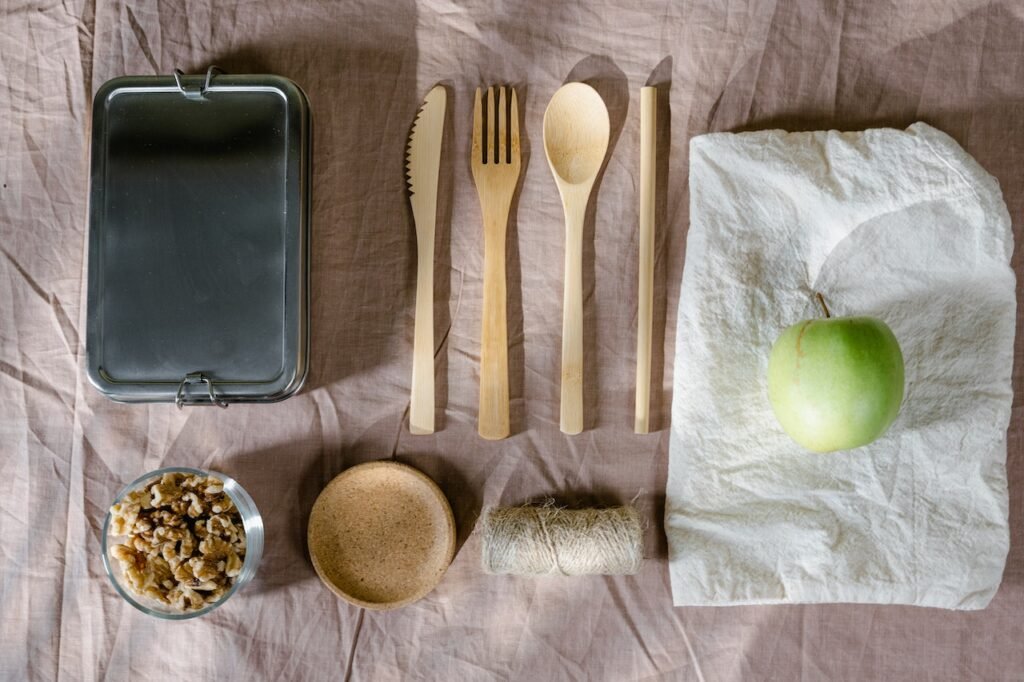
🍴Hand-Wash your Bamboo Cutlery Sets
Bamboo utensils may be put in the dishwasher, however, the fast heating during the washing cycle will shorten the lifespan of your cookware. Bamboo utensils should be hand-washed with a block of mild soap instead. Your utensils will last much longer and it will only take an additional second.
🍴Don’t Leave Them in the Water to Soak
Although bamboo is water-resistant, a protracted soak can harm the fibers. After using your bamboo cutlery, scrape off any food and clean them. If you have to leave right away, put them in a bowl or basket out of the way of water until you have time to wash them.
🍴Use a Finishing Oil Once a Month
Your bamboo utensils must be properly oil-treated to stay shiny and functional. Use a food-grade oil mixture designed specifically for bamboo. If you often use bamboo cookware, think about making this a monthly ritual. Consider lubricating less-used things before and after significant events to maintain their best appearance. Drying & cracking are more frequent when your bamboo isn’t constantly rehydrated using a secure oil mixture.
🍴Use Sandpaper
Your bamboo utensils may be kept smooth and natural looking by simply polishing them with a square with a fine-grit sandpaper. This quick fix will make any flaws disappear and restore your bamboo to its original, supple state.
Benefits of Bamboo Cutlery

A wonderful material is a bamboo. In addition to being environmentally friendly, they also have some additional advantages, such as being lightweight, strong, resistant to stains and odors, inexpensive, and fashionable. It explains why bamboo cookware is common and well-liked nowadays.
✔️Eco-friendly
These bamboo dishes were popular among environmentalists, but why? These dishes are a great alternative to plastic or metal ones made with chemicals that cause pollution. However, bamboo could be grown sustainably, has minimal negative effects on the environment, and decomposes relatively quickly.
Whereas typical hardwood requires 20 years to develop, this quickly-growing grass just needs three. They are a renewable and sustainable source for the manufacture of kitchenware due to their quick growth and decomposition. Moreover, plastic cookware made with chemicals may create toxic byproducts that are dangerous and can contaminate the food when cooked.
✔️Durable
Bamboo is inherently robust and long-lasting. While chopping difficult food like meats on your plate, you don’t have to be concerned about breaking the spoons or forks in two. They may endure a very long period if properly maintained.
✔️Lightweight
One benefit of bamboo is that it has a low density, making bamboo cutlery lightweight. One pair of bamboo cutlery, for instance, only weighs about 110g or about the same as one metal spoon. So, they’re a wonderful choice for camping & picnics when you wish to travel light.
✔️Resistant
Reusable bamboo utensils don’t collect odors, so they won’t change the flavor of your meal. Even though they resist stains, some foods, like curry and turmeric, have hues that cannot be avoided. After handling these meals, just carefully wash them with a bar of light dish soap to avoid having your utensils permanently stained.
✔️Safe
Due to its smooth qualities, properly polished bamboo tools may be used with any kind of kitchenware, including non-stick pans and pots.
✔️Affordable
Bamboo utensils of good quality are reasonably priced. This silverware is well worth the investment because it is strong and long-lasting.
✔️Presentable
There is no disputing that bamboo utensils would appear nicer in your kitchen than metal or plastic cutlery due to their hardwood surfaces. As they provide their establishment with a beautiful and elegant appearance, many restaurants and cafes also utilize bamboo cutlery to serve meals.
Disposing of Bamboo Cutlery
Depending on the set you bought, bamboo cutlery disposal might be simple or complicated. Lucky you if your bamboo cutlery sets are organic and recyclable, like ours. You may recycle bamboo by following our instructions.
Depending on how sophisticated the recycling centers are where you live, even if your silverware is not biodegradable, it could still be recyclable. Ask the recycling center in your area for their opinion. Below are several methods for recycling wood that has been chemically treated. The alternative is to turn your bamboo cutlery upside-down and decorate it with tiny stickers that list various plants. Start an organic garden by poking them into the ground! entertaining and original.
Bamboo Cutlery is Not all Made Equal
With good reason, bamboo has long been hailed as the poster child of sustainable materials. This grass takes far less water than trees to develop. It may also achieve full maturity inside one growing season, as opposed to the almost hundred years this can take for certain hardwood species. Bamboo will regrow from its current roots after being harvested. This eliminates the need to replant. Its distinct feature enhances soil health and decreases the effort required to maintain a bamboo grove.
Bamboo offers a degree of sustainability that other materials used to produce kitchen utensils do not have from the start of their life cycle. Of course, not all bamboo tools are created equal. While they are made of very sustainable materials, how they’re produced and finished varies tremendously. This can have an impact on how long the bamboo cutlery endures. Bamboo kitchenware made to survive for years will have a few key characteristics in common.
Lacquers will also be gone from high-quality bamboo items. Some businesses may save money by “smoothing” their bamboo items with a layer of lacquer. This gives the appearance of a shiny and smooth surface right away, but the coating may chip off with use over time. Use bamboo cutlery that have been meticulously sanded for a genuinely smooth feel that will not chip away.
Lastly, polish your bamboo utensils with safe food, toxic oils free, such as flax-seed oil. Bamboo cutlery that have not been properly polished might rapidly dry out and break. Finally, a high-quality bamboo tool will be made entirely of bamboo. Look for certified organic bamboo kitchenware to verify that your items are created with only chemical-free, natural ingredients.
Frequently Asked Questions
How long can you use bamboo cutlery?
These last about two to three months in our experience for 60-90 minutes of use. If you want to acquire melamine-coated factory bamboo cutlery sets, be sure to inquire. Melamine is commonly used to coat bamboo cutlery sets produced in China.
Is bamboo cutlery really good quality?
Because it can be reused, it can help minimize waste. Bamboo plants are sturdy, flexible, and heavy-duty, as well as lightweight, making them a suitable materials for heavy use. Several restaurant owners desire this for their throwaway flatware.
How should I take care of my bamboo items to maintain their longevity?
Keep your bamboo goods clean and dry, avoid exposing them to severe temperatures or direct sunlight for lengthy periods, and add a protective covering, such as a sealer or oil, if required. Also, if you want to use bamboo goods outside, make sure they are protected with a weather-resistant coating.
Is bamboo cutlery preferable to plastic silverware?
Bamboo cutlery is more robust and long-lasting than plastic tableware. Plastic cutlery is fragile and wasteful. Bamboo, on the other hand, is robust and can withstand adult and kid strain.
What is the issue with bamboo cutlery?
Another issue with bamboo cutlery is that it needs to be properly disposed of to have a good influence on the environment. When biodegradable materials are no longer needed, they are frequently discarded. These items do not biodegrade or contribute to the growth of landfills.
What are the downsides of using wooden cutlery?
Wooden utensils have the drawback of being more difficult to keep clean than stainless and plastic cooking equipment. Also, if used with soups and sauces, the soup or sauces may enter the wood, necessitating the replacement of bamboo cutlery.
Final Thoughts
Generally, bamboo cutlery and cookware have various advantages. They are equal to metal cutlery and a fantastic replacement for disposable plastic utensils due to their light and eco-friendly properties. Bamboo cutlery is also long-lasting, inexpensive, and trendy. They may last a long period if maintained properly, making their cost worthwhile. If you don’t already have reusable bamboo-made cutlery or utensils, get some right now. But, be sure to get high-quality things that will last a lot longer and do not contain any dangerous chemicals or components. Do you want to know how is bamboo toilet paper made? Click Here!
0Shares

